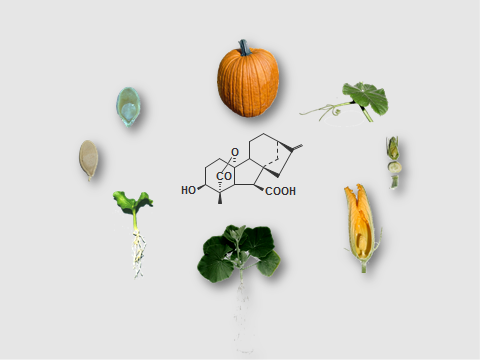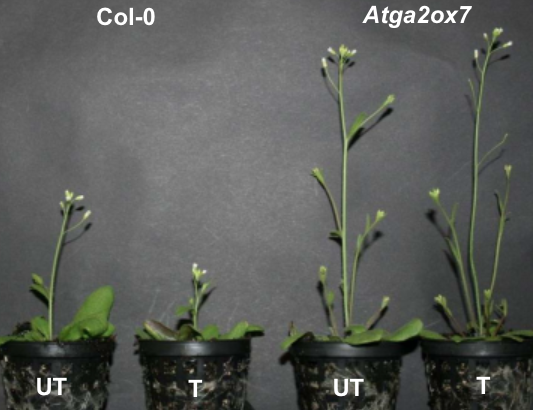Research
Group Theo Lange
Fit plants are necessary to increase food and feed production for a growing world population. Gibberellins (GAs) are important signaling molecules that are produced to regulate and integrate growth and development throughout the life cycle of plants. Seed development and germination, shoot and root growth, floral induction, flower, fruit, and tendril growth etc. are GA-regulated developmental processes. The alteration of the GA signaling pathway has led to improved agricultural productivity of important crops, as the "Green revolution" has shown.
Research in my group is focused on the cucurbits, whose family members are important crops, and the plant hormone GA. We are investigating new strategies for fine-tuning the GA signaling network, which offers enormous potential for further improving plant performance:
From cucurbits we are learning how GA signaling directs development, by identifying key regulators and their trafficking. The expression of key regulators of the GA signaling pathway can be edited. By modulation of the GA network, plants are designed fit for the future that offer strategic value to agriculture and horticulture.

Group Maria Pimenta Lange
Plants are subjected to multiple abiotic and biotic environmental stresses from which, contrarily to animals, they cannot escape. To survive, they developed sophisticated defense strategies during evolution. When plants perceive stress they can adjust their growth and development. Mechanical stress, for instance, can be caused to plants by strong winds, rain, and physical contact. In response to thigmo (touch) stresses, plants undergo various morphological and physiological changes including dwarf growth, thicker stems and delay in flowering. Thigmomorphogenesis (morphology change due to touch) was described for long time but although progress has been made in mechanobiology, specific sensors and signalling pathways explaining the physiological basis of mechanical stress are still unknown.
Gibberellins (GAs) are phytohormones that control plant growth and development. Recently, we showed that GA-signalling regulates thigmomorphogenesis in Arabidopsis. We provided evidence that decreasing GA-levels by GA-catabolism, via transcriptional control of AtGA2ox7, regulates growth inhibition and delay in flowering upon mechano-stimulation. Without AtGA2ox7 the plant does not react on touching (see below). One of our research topics is to unravel touch signalling pathways.

To survive stress, plants have developed sophisticated responses. Some of those involve convergence of signalling pathways for abiotic and biotic stress resistance. As plant growth hormones, GAs are targets for growth regulation to compensate stress and can be central players to integrate different types of stresses. This interlink between different stress responses might be used for "priming" stress strategies, i.e. increasing plant resistance to one type of stress by previous exposure to another type of stress. One of our research goals is to analyze interactions of touch and other abiotic and biotic stress signalling pathways to unravel the function of GA-signalling for acquiring abiotic and biotic stress resistance. We will test the potential role of touch for improving stress resistance in plants in an environmental friendly way.
Bachelor and Master students are welcome to participate in our research topics!

